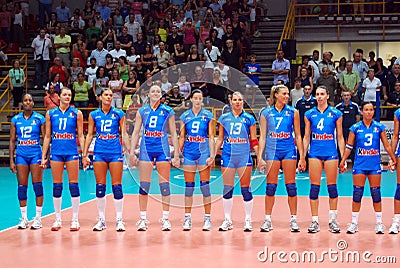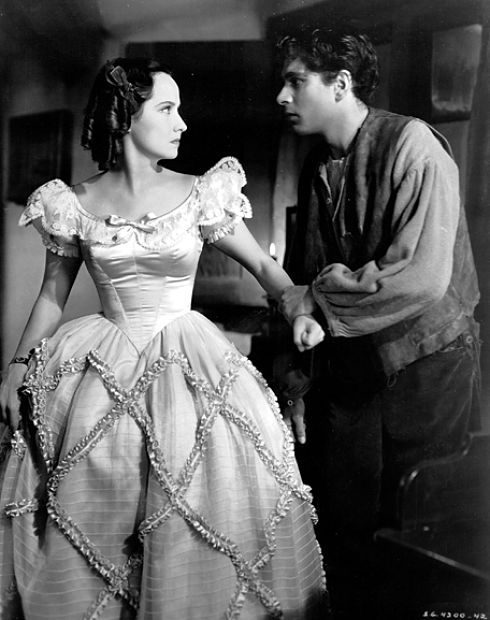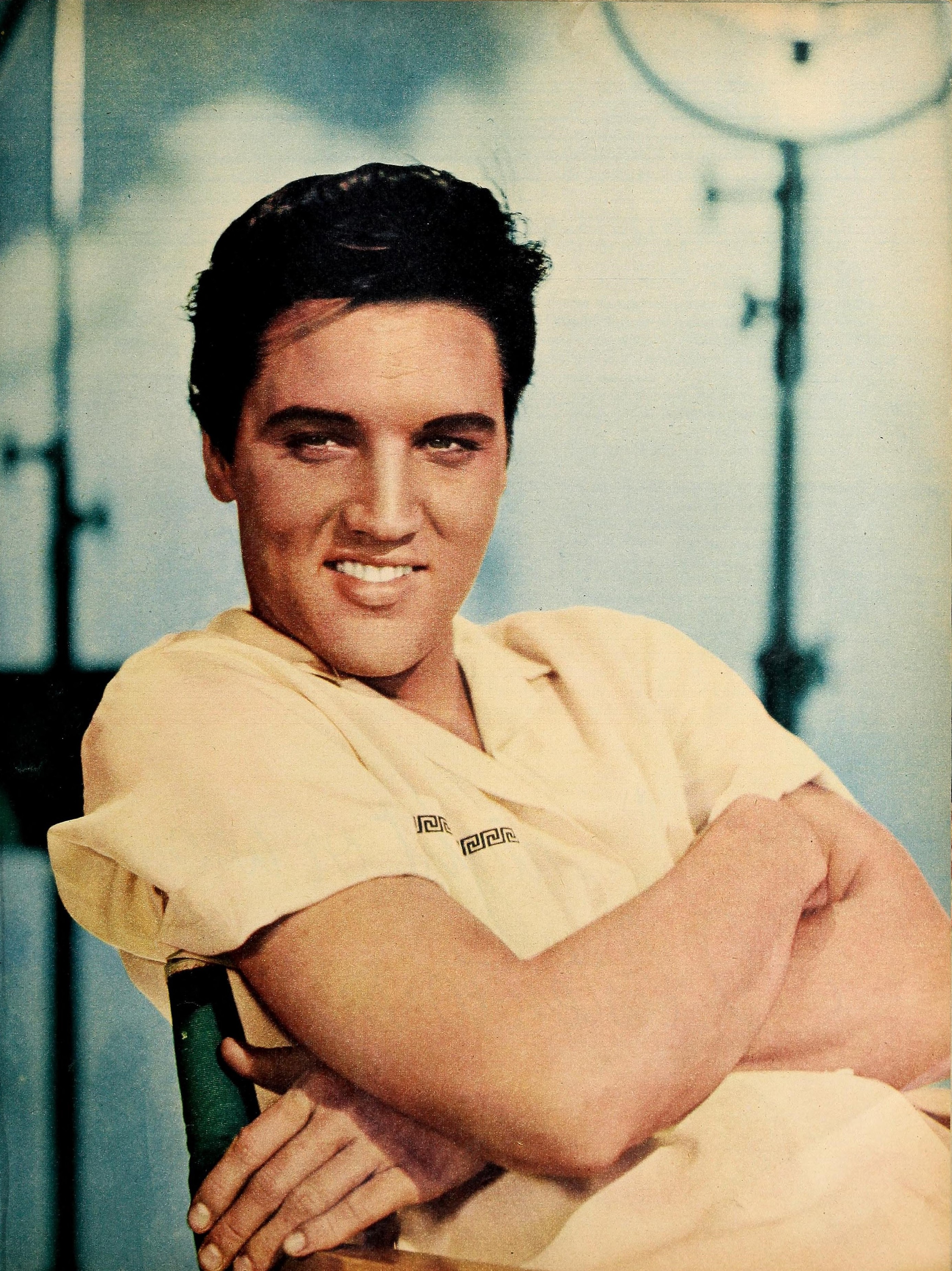17/11/16
Hi today we started learning how to work this chrome book at the library in Nae Nae also it is fun having WiFi at home and i have already started and it is so fun.also i am choosing Italy because that country is very interest to me and also i want to learn more about Italy and learn there language also i already know how to say cinema in Italian chine ma and also i know how to say the number 3 in Italian as well it dloss and 1 as well 1,Ono i would like to stay and chat but i got to go but i will see you in chapter 2 this is chapter 1 what you are reading bye.😋
18/11/16
hello boys and girls through out over seas in Italy i just wanted to say ciao and i am really excited learning the county Italy for those that are reading this please leave a comment or a video of you if that's okay um i live in New Zealand far away from you also i speak English so don't worry any way i know some of Italy i know how they celebrate Christmas but any way i am going to do a activity day 2 1 well i would like to go to the Colosseum because it is a historic place and in the ancient Rome time they used it for games. also it is 1,936 years old. Anyway only seven more days until Christmas.
20/12/16
What's up guys it is chapter 4 day.2 activity 3 well i am suppose to choose a place that is my favourite place and my place is basically the Hutt city library because it is a Quite place to do your home work there'reading ' going on the computers and borrowing books and films and free WiFi as well also it's in the Hutt city the same street as the hutt valley high school behind the church also my friend goes there J.J also my auntie goes there as well the picture it won't let me pate it on there but i will be fine without a picture. Sorry anyway i got to go but i will see you in chapter 5 bye.
23/12/16
Wow chapter 5 is a one more day until Christmas day in New Zealand we have our Christmas day on the 25th of December and this Christmas i will be coming up to my grandma the moss's family celebrate Christmas at Mrs Moss place also it is one time that everybody gets to play in the pool because my grandma has a pool in her backyard and i am going up their with my cousins and i will be staying the night any way this is week one and i am already done but i am not doing the activities for the mac book air i am just doing it for fun and for learning as well so yeah it has been really good and also leave comments please because i would really like to reply to them back so please do leave a comment any way i got to go but i will see you in chapter 6 .
5/1/17
wow chapter 6 so we have to list somethings that is suited with airline new zealand so lets go so number one all the belongings that you brought with you must be in the lockers up a above you or under your seat.Number 2 belts below is around your hips must wear it when you take off and land and when you know it fits it will make a click sound.Number 3 if a musk overhead that means it is oxygen if the plane is going to crash just in case you can,t breath. Number 4 don't smoke while on the plane because everybody does not want to choke.Number 4 if a emergency or a crash you have to press against the seat in front of you but if you don't have a seat infrount of you you just put your hands on your head and tilled forward and yeah.Number 5 the life jackets are right beneath your seats so you just pull the tags out to get the life jacket out then over your head it goes pull it back when you exit if more float blow into the red tube you blow. so that's a Little bit of airline new Zealand so um yeah bye chapter 7 i will see you there.
7/1/17
so chapter 7 i have to do a little story that i have to do and it is 8 ton 10 sentences so um i will start my story like this the spaceship was out of control and only one person could save us and there was only seven of us . i had to get the super gas mask and put it on both on all of them . 2 minutes later there was a massive explosion and everybody was stating to fall asleep. Only me were alive because i was the only one who was wearing the gas mask so i had to save them. so i put all of the mask but it was to late so i put on mask who put fart into there face and it would wake them up. Then Stan walker came and it shocked me he gave me a surprise. Stan walker said that there will be an eplosion and we need to get out of the spaceship so i got out and stan walker had my friends on his back. Stan was super strong and by the time we were 3m away the ship basically blowed up. So we got to go back to earth and my friends got to wake up and they were glad that they were alive so we got back to earth a nd i thank Stan walker for doing it and saving us so yeah anyway i got o go but i will see you in chapter 8 bye.
10/1/17
Yoy what up chapter 8 so i have to name or list what sports they play in Italy and chose what is my favourite and why. so yeah i will only list 6 sports 1 soccer. In Italy they don't treat soccer as a sport, soccer is like a region bu ti isn't. Italy has provided soccer's most dominant teams both international competition as well in European completion. Every Saturday and Sunday thousands upon thousands of people leave their homes to watch the game live and of course millions take time on Monday to discuses of results.

15/1/17
Chapter 9 number 2 basket ball . Pallacansttro as the Italians call basket ball in there country is a sport gaining rapid in Italy although nation teams have exist since the 1950's. The nation top pro league in the world after American NBA and Spain ABS. Some cities, Bologna, Sienna, Pesarovarese basket ball is the most popular sport.
Number 3 Tennis.
In Italy has been a favourite sports for a long time and Italian tennis player have won several gold medals, Tennis tournament have signification follow near courts and by televisions.

Number 4 Auto Racing
when you think of auto racing you think of Ferraro that is what they call tennis in Italy. Auto Racing receives much attendance in Italy,while the national is host to a number of notable automobile racing events,such as the flamed Italian grand rux. The Italians flair for design is legendary and it should come as no surprise that ferrain has won more formual ones than any outer manufacture.
Number 5 volleyball
Volleyball made its first appearance in Italy after the end of World War I. In 1929 a Federazione Italiana Palla a Volo (FIPV) was founded. During the 1930s several tournaments were organized by youth or workers movements within fascist associations like GIL and OND.[2]
After the end of World War II and the overthrow of fascist regime, a new association, called Federazione Italiana Pallavolo, were founded in 1946. Later that year the city of Genoa hosted the first official male championship.[2]
Quickly volleyball became popular in northern regions like Piedmont, Lombardy and especially Emilia-Romagna and Tuscany: clubs based on Ravenna, Modena, Parma, Bologna and Florence regularly won all the championships for more than thirty years. By the 1970s outsider clubs from centre-south cities (Rome, Catania) were more competitive.
In the 1980s the growth of Italy men's national volleyball team led volleyball to a peak of a popularity. After a period in which Turin's CUS and Parma's Santal dominated, great entrepreneurial companies (like Fininvest in Milan, Montedison in Ravenna and Benetton in Treviso) decided to support and invest in volleyball, equipping strong teams which often won European and Intercontinental trophies. During the 1990s and 2000s decades, Serie A1 was by far the best volleyball league in the world, due to the simultaneous presence of all Italian's golden generation members and even all the best foreign players from all over the world (Netherlands, Brazil, Cuba, Russia etc.). All along 1990s, Italian teams dominated all European club competitions and Serie A1 was called "the NBA of volleyball".[3][4]
Today Serie A1 is called Superlega, it's not the NBA of volleyball anymore, but it's still one of the most difficult and competitive leagues in the world. Italian volleyball is diffused all over the country but, as a consequence of the enormous popularity of other disciplines (football above all) in big cities, it finds its highest popularity in medium-to-large cities.[5]

Number 6 cycling
Women athletes do not only participate in UCI events, they provide some of the most exciting racing in our different disciplines. While the history of women’s cycling may be shorter than that of men, our female athletes have made up for lost time. Today, our women World Cup winners and World Champions are incredible ambassadors of our sport.
UCI Women's WorldTourThe first women’s world ranking for road cycling was introduced by the UCI in 1994, and four years later the World Cup made its debut in Sydney, Australia. American Dede Barry won the opening race, while Lithuanian Diana Ziliute was the first overall winner of the series.
Eighteen years later, 2016, the series was replaced by the UCI Women’s WorldTour. This new series comprises the best women’s events in the world and includes 21 races for a total of 47 days of competition, combining 15 one-day races and six stage races held across 10 countries and three continents. All information about the series can be found in the UCI Women’s WorldTour section of the UCI website (link above).
TrackTrack cycling races date back to the 19th century (the first World Championships were held in 1895), in the days when women were not exactly encouraged to participate in any sports. The post war period in Europe allowed for women to slowly earn their place on the continent’s velodromes, and today the men/women ratio of participants in UCI Track Cycling World Cups and Championships are very balanced, as is the prize money for these events.
Mountain bikeUnlike other traditional disciplines, mountain bike events have always combined women’s and men’s races. From the introduction of the World Cup in the 1990s, Olympic cross-country female stars such as Juli Furtado, Alison Sydor and Paola Pezzo received the same attention and were paid the same prize money as their contemporaries John Tomac, Bart Brentjens and Thomas Frischknecht.
Equality is probably one of the greatest values that this young sport, born in the 1980s has carried forward. In 2011 the UCI introduced a team ranking that, thanks to its points system, favours mixed teams. This has had a particularly positive impact on the development of women’s downhill, as teams started looking for young talents in order to be competitive in the team ranking. In Olympic cross-country, most teams have been mixed for a long time.
Cyclo-crossFirst introduced for the 1993-1994 season, the Cyclo-cross World Cup was a men-only affair until 2005-2006, when a women’s elite race was included. Although cycle-cross is the Belgian national sport - and therefore where most of the financial support comes from - it is the women, from countries with less tradition in this discipline, who are slowly but surely ensuring its globalisation.
BMXBMX was born in the 1960s and although it was originally a baby brother of motocross, it eventually found its home within the cycling family. By 1993, the discipline had been fully integrated into the UCI portfolio. Since its introduction to the Olympic programme in 2008, female participation in BMX has been on the rise, and its top athletes are internationally renowned.
TrialsTrials is one of cycling’s most spectacular disciplines that requires outstanding bike handling skills, control and nerves of steel. Time is of lesser importance than in other disciplines, with the win going to the rider who incurs the least number of penalty points. It is a competition in which men and women are judged on exactly the same set of criteria.
Para-cyclingPara-cycling is all about offering equal opportunities; not only to men and women, but to people. At the Paralympic Games, 40% of the medals are awarded to women.

18/1/17
Hello chapter 10 okay so this chapter that i have to do some research in Italy about there holidays and entertainment i have to research so lets get started so.
Italians celebrate many holidays, including international, national and religious holidays. The major holidays include New Year's Day (January 1), Epiphany (January 6), Easter/Liberation Day (April 25), Labor Day (May 1), Republic Day (June 2), Feast of the Assumption (August 15), All Saints' Day (November 1), Feast of the Immaculate Conception (December 8), Christmas (December 25), St. Stephen's Day (December 26) and New Year's Eve (December 31).
Italians celebrate Christmas, New Year's Eve and New Year's Day with celebrations similar to many countries around the world. Epiphany Day is the last holy day of the Christmas season, celebrating the arrival of the three Kings to the stable where baby Jesus lay, in the Christian tradition. Based on Italian folklore, on this day a kind-hearted witch, la Befana, brings small gifts and toys to well-behaved children.
Liberation Day celebrates the day that Italy was freed from fascism at the end of World War II by the Allied troops. May Day commemorates the achievements of the country's labor unions. Many demonstrations and protests for workers' rights are held on this day. Republic Day celebrates the day Italy ended monarchy rule and became a republic in 1946. The Feast of the Assumption, also known as Assumption Day, celebrates the day, in the Catholic belief, that God took the body of the Virgin Mary into heaven. On this day, statues of the Virgin Mary are marched through the streets.
All Saints' Day is a day to remember all the Catholic saints. The Feast of the Immaculate Conception honors the Virgin Mary and the immaculate conception in the Catholic tradition. Families typically attend mass on this day. St. Stephen's Day, the day after Christmas, honors the first Christian martyr and is typically marked by visits to nativity scenes at churches. Carnevale, or Mardis Gras, is not a major public holiday but is widely celebrated in certain Italian regions, including Venice. Festive parades, masquerade balls and feasts commemorate this day before Lent begins.
CONTINUE READINGWeddings
- The starting dish of Italian weddings is typically antipasto, which includes stuffed mushrooms, olives, salami, pickled peppers, calamari and prosciutto, along with the sweet treat, confetti, which is white-sugar-coated almonds. The main course is a large, meat dish, which may be roast suckling pig or lamb, served with pastas, fruits and wine. Some foods are symbolic; wanda, bow-tied twists of fried dough sprinkled in sugar, means good luck. The wedding cake is served alongside other pastries and coffee.
Christmas
- One of the highlights of the Italian holiday season is the Feast of Seven Fishes eaten on Christmas Eve, which generally includes calamari, scungilli, baccala or dry-salted cod, shrimp, clams, mussels and one large fish-- a snapper, trout, tuna or salmon. During Christmas day, snacks include sandwiches, fruits and nuts. As with most Italian celebrations, the starting course on Christmas Day is antipasto, followed by soup, a pasta, a meat dish and salad, accompanied by glasses of wine. For dessert, Italians visit what they call the Venetian table, which holds cookies, puddings and pastries, served with coffee.
Easter
- Eggs are the star ingredient in Italian Easter dishes, as they are a symbol of renewal and life. Two of the most popular egg dishes are brodetto pasquale, which is a broth-based soup thickened with eggs, and torta della pasqualina, a pie made from ricotta cheese, eggs, cold cuts and hard cheeses. Lamb is typically the main dish, grilled or roasted on a spit. Breads are shaped into crosses and doves. Side dishes typically include asparagus, artichokes, fava beans and baby peas.
Italian Festival Food
Recipes and Traditions
from Italy's Regional Country FairsBy Anne Bianchi
Italy is the festival capital of the world. In every season and region, and whether held in honor of a saint or in the spirit of secular fun, each festa or sagra features distinctive rituals, and delicious dishes. "In the end," says Anne Bianchi, a noted food writer of Italian heritage, "all Italian festivals--regardless of type or location--have one uniting factor: food."After years of traversing Italy's countryside, and eating her way from festival to festival, Bianchi decided to treat home cooks and armchair travelers to the cream of authentic cuisine, served with hearty slices of local culture. The result is a unique and tantalizing collection, Italian Festival Food: Recipes and Traditions from Italy's Regional Country Fairs.From Piedmont to Sicily, from appetizers to dolce, Italian Festival Food takes readers on a sweeping gastronomic tour, peppered with fascinating insights into a people and their proud heritage. Based on intense tastings and conversations with village cooks, Bianchi presents 150 recipes steeped in tradition. To ease replicating genuine Italian specialties in American kitchens, each recipe comes with an estimate of preparation time required; the level of difficulty (Easy, Moderate, or Advanced); and a complete list of ingredients, most readily available in the average U.S. supermarket. Bianchi also offers helpful tips on which part of the recipe can be prepared ahead of time or stored for future use, as well as festive serving suggestions and palate-pleasing wine-pairings from Italian vintners.Part cookbook, part travelogue, and a totally captivating read, Italian Festival Food showcases the natural bounty of nine of Italy's regions. Bianchi begins each section with a memorable vignette, highlighting astounding culinary feats; glorious shores, mountains, and churches; and heartwarming personal encounters. Throughout, 62 black and white photographs capture every aspect of Italy's rustic festas, from people at work preparing food to revelers focused on the business of sharing and eating. For vicarious tasting, readers will visit: Piedmont, with a stop in the tiny village of Caprarola to celebrate the walnut harvest and sample Rondelli di Polenta con Salsa di Noce (polenta rounds with walnut sauce).Trentino, with a stop at Alto Adige's annual Rice Festival for an array of glorious grains, from Risotto con Ciliegie (risotto with black cherries) to Brodera (risotto with spareribs).Emilia-Romagna, for a lesson in making fresh egg pasta and bites of Malfatti al Mascarpone (mascarpone cheese dumplings) and Vincisgrassi (stuffed lasagna).Tuscany, with a stop at Nola's Lily Festival for Cianfotta (a summer stew of eggplant, red pepper, and black olives) and Budoia's Festa dei Funghi for unparalleled mushroom delights.Sardinia, for a lively history of May Day celebrations, and tastes of Le Virtu ("The Virtues," a vegetable-rich soup) and Sfincione di San Vito (a sardine-packed pizza served on St. Vito's Day).Campania, with trips to Novoli on St. Anthony's Day for Torta Rustica (a hearty cheese and proscuitto pie) and Camogli for Torta Pasqualina (a chard and ricotta tart to honor St. Rocco).Puglia, for a celebration of Italy's vineyards and samples of local meat, game, and poultry dishes, including Holy Saturday's special Pitaggio (veal sausages with artichokes and fresh fava beans).Calabria, for a scenic walk on coastal beaches and stops at festivals in honor of the sea's riches, featuring Calamaretti Picante (spiced baby shrimp) and Cacciucco (a signature fish soup).Sicily, with sweet stops at Trastevere's Feast of the Madonna for Sformato Trasteverino (a kiwi custard tart) and Marineo's St. Ciro Festival for Cassatta (a chocolate ricotta refrigerator cake).Complete with an inventory of pantry staples, building-block recipes, and mail-order sources for those rare, hard-to-find ingredients, as well as a calendar of Italy's country fairs and feasts, Italian Festival Food will not only inspire cooking and travel, but also a passion for the culture, lore, and people of Italy.Anne Bianchi is a writer of Italian heritage who specializes in food. A restaurant columnist for La Cucina Italia magazine, she is the author of several books, including From the Tables of Tuscan Women and Zuppa! She divides her year between New York City and the Tuscan province of Lucca, where she runs a cooking school, Toscana Saporita.Buy the Book! so i would go for all of them that's all.
20/1/17
Chapter 11 week 5 day 9. So i am nearly finished and i have to find a musician so i choose this girl who is a italian singer and her name is Alice Visconti.
|
Alice live in concert, 20 March 2009
| |
| Background information | |
|---|---|
| Birth name | Carla Bissi |
| Also known as | Alice Visconti |
| Born | 26 September 1954 Forlì, Province of Forlì-Cesena, Italy |
| Genres | Vocal, pop, rock, classical, folk, experimental, ambient, electronica |
| Occupation(s) | Singer-songwriter |
| Instruments | Vocals Piano Keyboards |
| Years active | 1971–present |
| Labels | CBS Records, EMI, Warner Bros. Records, cuts Music |
| Associated acts | Franco Battiato |
| Website | www |
lice (Italian pronunciation: [aˈliːtʃɛ]), also known as Alice Visconti (born Carla Bissi, 26 September 1954, Forlì, Province of Forlì-Cesena, Italy) is an Italian singer-songwriter and pianist, active since 1971. Alice had her breakthrough after winning the Sanremo Music Festival with the song "Per Elisa" in 1981, followed by European hit singles like "Una notte speciale", "Messaggio", "Chan-son Egocentrique", "Prospettiva Nevski" and "Nomadi" and albums like Gioielli rubati, Park Hotel, Elisir and Il sole nella pioggia charting in both Continental Europe, Scandinavia and Japan. In 1984 she represented Italy in the Eurovision Song Contest with "I treni di Tozeur", a duet with longtime collaborator Franco Battiato. In her more recent career Alice has explored a diverse range of musical genres including classical, jazz, electronica and ambient and has collaborated with a large number of renowned English and American musicians. Her latest album Samsara was released in 2012.




so yeah that is the ,musician that i choose she is pretty cool and i love her the minute i looked for musicians in italy and thats what i got any way we are going to paraparumu today and we are having fisherman's tabel for lunch then after that we are going to the park which is going to be fun i hope after we finsh with the park we are going to the movies to see red dog true blue the new movie that came out in cinemas today the 20th of January 2017 well i hope you enjoy and i will see you in chapter 12 bye.



28/1/17
Wow chapter 12 already god it has been fast so i am done so um i am just going to talk about i got my uniform and stationary on Friday the 27th of January 2017 and also there is a new movie coming out in the cinemas in paraparaumu that i realy want to see and that is Beauty and the beast which is an classic fairy tale but it is has real people in it and it has Emma Watson in it so i am looking forward to it i realy do so that is all but i will see you in chapter 13 bye.




31/1/17
Hi guys boom my chapter 13 has came and i have no idea what to talk about maybe my name or your name or talk about my future um maybe my Future well before i tell you i will not be telling you all of it because i think some of it i want private but i might talk about my dream job or anything but the ones that i am not telling you in my future is very very private and i want to keep it to myself and yeah but my future is maybe making smoothies for everyone i might become a smoothie maker you never know but what i do know is that i might be donig that in 2033 you never know but i think Yeah so now let,s talk about names i can upload heaps of names and if your name is one of those please leave a comment down below so i hope you enjoy and i will see you in chapter 14 keep being happy and joyful to your selves.











Hello i am sorry if your name was not there i am very sorry anyway chapter 14 is that right anyway i am going to Avalon intermediate it is awesome excepted the kids the kids are men to me sometimes but i don,t listen to them but besides that i am fine any way i got to go but i will see you in chapter 15 bye.
11/2/17
well chapter 15
and i saw weathering heights which was so cool and um i watched the 1939 vision with Laurence Oliver in it and he is a good actor that played Heath-cliff in weathering heights anyway i will leave some images
above and chapter 16 i will see you bye.





13/2/17
Hello Boys and Girls it is chapter 16 and we will be talking about music so i like old music from the 1980's, 70's,60's,50's and 40's. The artists i like listening to is Elvis presely, Billy Joel, Wham, Spice girls, Mick Jagger, David Bowieand also i like movies as you could see i like old movies and new movies as you can see any way i have to go but i will see you in chapter 17 bye.











16/2/17
Wow chapter 17 long way to go but i think we can do it anyway nothing is going on for me but what i do know is i don't know that's all anyway i will just upload the Avalon intermediate web page or something anyway do you know the room 5 Mr crafts yeah well i"m in his class Room 5 yeah plus Georgina's in my class and Tanisha and this boy called Wiremu Williams i think which is fine with me anyway yeah that"s all until chapter 18 bye.
CLASSROOM TEACHERSP
 Room 1: Simon Flockton
Room 1: Simon Flockton
Hillary Team Leader
Room 2: Joan Makisi
 Room 3: Luke Thompson
Room 3: Luke Thompson Room 4: Stephanie Lamborn
Room 4: Stephanie Lamborn
27/2/17
Well hello chapter 19
so there is going to be a new movie coming out on march 3 or 2 and it is called Logan the movie and it is a bit like X men and it has the man with those sharp things growing out of his hands. Anyway he has a daughtah or an niece or something like that and the child is around 10 or 9 yrs old and she has those sharpie things coming out too and it is really awesome i saw the trailer 5 days ago and it is amazing you just type in Logan 2017 movie and it will have the trailer okay so i bitter go but i will see you in chapter 20 bye.
 Room 5: Stuart Crafts
Room 5: Stuart Crafts Room 7: Matt Jackett
Room 7: Matt Jackett
Apirana Team Leader
 Room 8: Julia Poasa
Room 8: Julia Poasa  Room 9: Sam McGavin
Room 9: Sam McGavinIan Hastie
Principal
2/3/17
Okay chapter 20 a little bit of my heritage so yeah my heritage is very unusual because most of the people don't have this Heritage and i will be talking about some of mine not all of them but some so lets began there is two heritage i am going to tell you about and yeah. So the first one is England so my grandfathers of my dads side is from England and i have the accent on me and you can basically hear it a little and my dads side s from here and that is the first and now the second is i am a quarter of Niue and
i know more language then my mom and aunty does so yeah they do not have an accent of their own and now the accent i can do is the ones that i am not from which is there is a list down below.
1 Irish
2 American
And two that i am apart of.
1 Scotland
2 England
So that's about me i will see you in chapter 21 woh.




Ciao e Benvenuto (hello and welcome)
ReplyDeleteHow exciting you have chosen Italy it looks bellissimo (beautiful) I have attached 5 facts about Colosseum
1) The Colosseum was built between 72 A.D and 80 A.D under the Emperor Vespasian, in the heart of Ancient Rome.
2) Made from stone and concrete, this magnificent monument was built with the man power of tens of thousands of slaves.
3) The Colosseum is the largest amphitheater (meaning 'theatre in the round') in the world! Oval in shape, it measures 189m long, 156m wide and 50m high (about the height of a 12 storey building). This ancient sporting arena could easily fit a modern day football pitch inside!
4) This brilliant building had 80 entrances and could seat approximately 50,000 spectators who would come to watch sporting events and games. These events included gladiatorial combats, wild animal hunts and, believe it or not, ship naval battles!
5) Free for all! At the Colosseum's major events - often those organised and paid for by the emperors themselves - there was no entry fee. And free food was sometimes served, too. Bonus! Emperors would use this as a way to gain popularity and support from the public -
See more at: http://www.ngkids.co.uk/history/colosseum
I think the places you have chosen around New Zealand are atahua (beautiful)
I look forward to hearing what else you will be doing
ka mau te wehi (Awesome)
thank you are you Italian?
Deleteplease let me know
ReplyDeleteKia ora Keira Happy Boxing Day! How was your christmas day? Anything to write about? :)
ReplyDeleteTaka is from New Zealand, we are looking after the website :)
Hope you and your family have a great time in the sun today!
You can find people from Italy and other countries if you comment on their blogs.
You can find these blogs on the Home Page and clicking on "Other Countries"
You can click on the links under "Italy" or any other country you like!
This comment has been removed by the author.
DeleteCiao, Keira! (Hello, Keira!)
ReplyDeleteMi chiamo Lillian. (My name is Lillian.)
Abito a Lower Hutt. (I live in Lower Hutt.)
Lavoro a Hutt City Libraries. (I work at Hutt City Libraries.)
I don't speak much Italian; but, I have an honorary nonna (grandmother) and nonno (grandfather) who are Italian and who helped raise me. Because of my nonna and my nonno, I really want to visit Italy one day. And, I want to eat Italian food in Italy! What interests you about Italy?
wow well thank you i have always wanted to go to italy to Lillian
Deletegood job
ReplyDeleteThank you Natasha W check out the boy that is named Stephen.
Delete